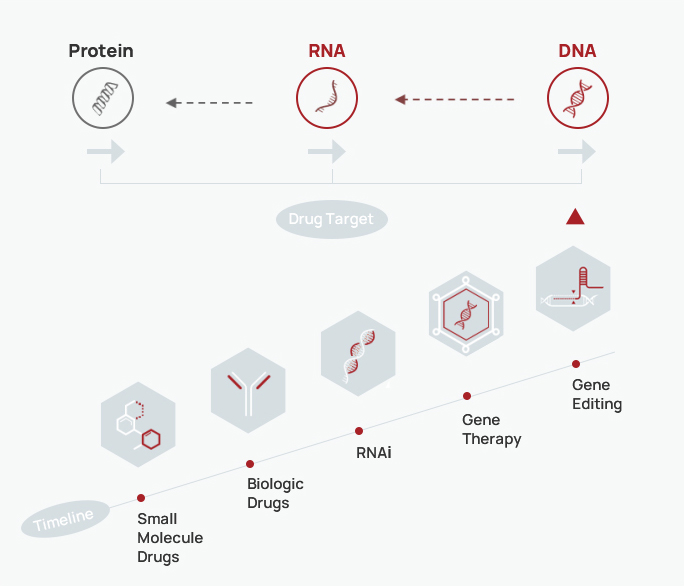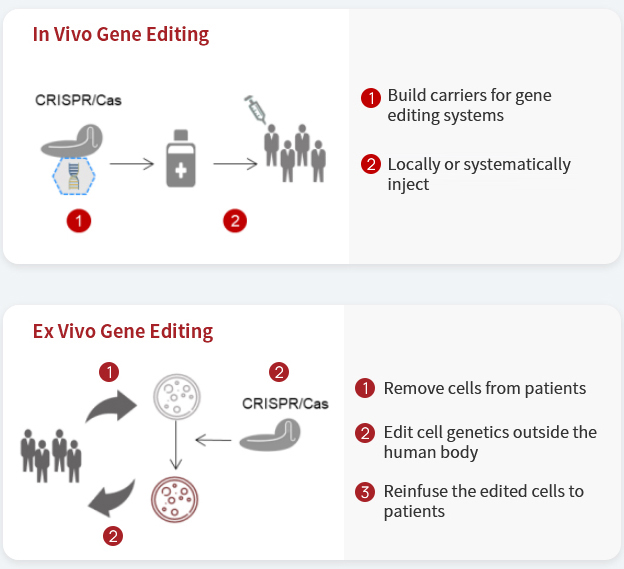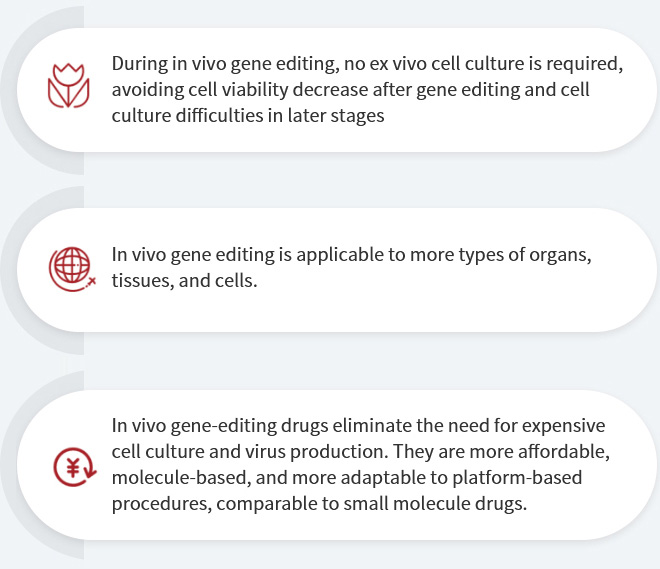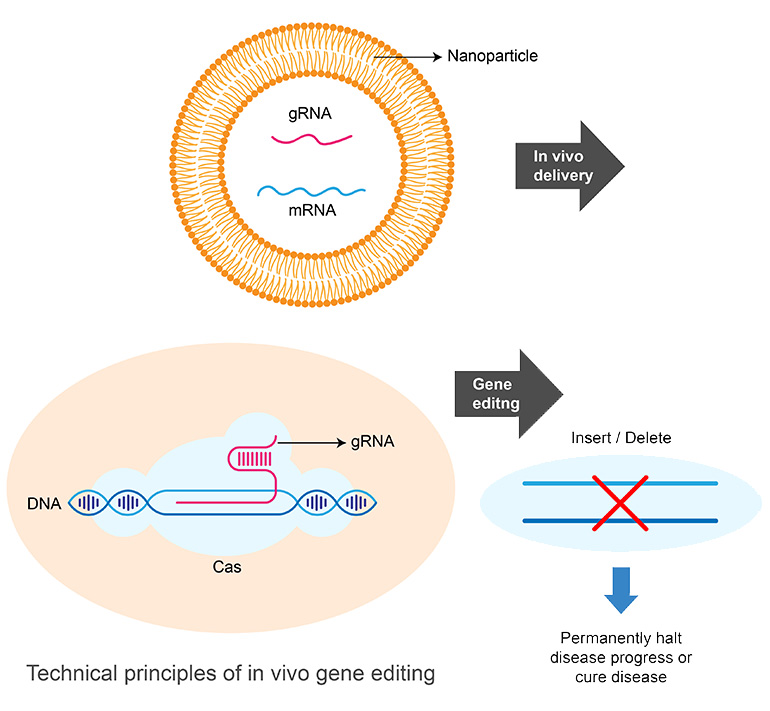Why in vivo gene editing?
1. Gene editing technology unlocks a new chapter in disease treatment
Gene editing therapies provide many unique advantages and are potentially the optimal approaches to eliminate diseases

Target nuclear genes, rather than secreted proteins, transmembrane proteins, or RNA

Enable precise genome editing for permanent changes

Boast a clear mechanism of action (MOA) on diseases, with the potential of a permanent cure, rather than long-term disease management

Overcome the limitations of small nucleic acid drugs and gene therapies

Hold excellent prospects in commercial markets and high potential for further development
2. CRISPR Gene Editing: A revolutionary technology for groundbreaking progress
Recognized with a 2020 Nobel Prize, CRISPR technology is a widely-used fundamental biological technology
By focusing on the fundamental genetic level, this technology can immediately reverse or cure diseases
3. CRISPR: This exciting new technology is swiftly developed into promising products
Exa-cel, the ex vivo gene editing product of CRISPR Therapeutics and Vertex, was approved for marketing in November and December of 2023 in the US and UK. This approval as a marketed drug (product) provides evidence of the safety and efficiency of CRISPR.
Many companies, including Editas (in cooperation with BMS), Intellia (in cooperation with Novartis & Regeneron), Beam (in cooperation with Pfizer), Verve (in cooperation with Lilly), and GSK, are now conducting clinical trials for a wide range of indications.
Technology Roadmaps for In Vivo vs. Ex Vivo Gene Editing
Accuredit Therapeutics
Focusing on In Vivo Gene Editing
In vivo gene editing
fundamental advantages over ex vivo gene editing, RNAi,
cell-based therapies and virus-based therapies
-
Technological advantages
safe, efficacious and target-specific
-
Therapeutic advantages
single-dose cure.
Can be re-dosed if needed.
-
Cost advantages
non-cell/virus based
-
Market advantages
more therapeutic targets with great market potential and not limited to rare disease

 Target nuclear genes, rather than secreted proteins, transmembrane proteins, or RNA
Target nuclear genes, rather than secreted proteins, transmembrane proteins, or RNA Enable precise genome editing for permanent changes
Enable precise genome editing for permanent changes Boast a clear mechanism of action (MOA) on diseases, with the potential of a permanent cure, rather than long-term disease management
Boast a clear mechanism of action (MOA) on diseases, with the potential of a permanent cure, rather than long-term disease management Overcome the limitations of small nucleic acid drugs and gene therapies
Overcome the limitations of small nucleic acid drugs and gene therapies Hold excellent prospects in commercial markets and high potential for further development
Hold excellent prospects in commercial markets and high potential for further development



